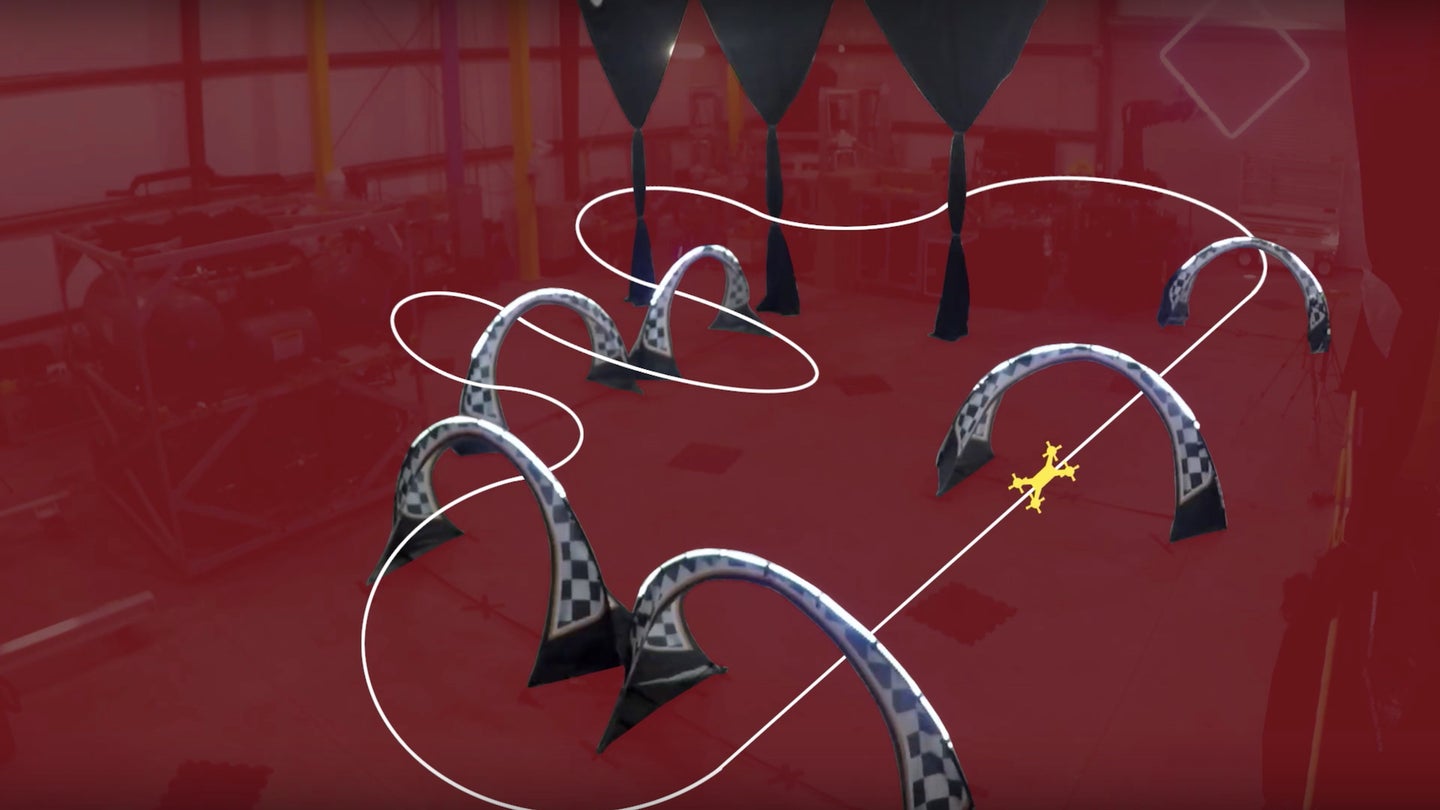Watch NASA’s Autonomous Drone Race a Human Pilot
NASA put its obstacle avoidance and vision-based research to the test, by racing an A.I.-infused drone against a human opponent.

In October, NASA’s California-based Jet Propulsion Laboratory pitted a drone controlled by artificial intelligence against a professional human drone pilot named Ken Loo. According to NASA's press release, it had been researching autonomous drone technology for the past two years at that point, funded by Google and its interest in JPL’s vision-based navigation work. The race consisted of a time-trial where the lap times and behaviors of both the A.I.-operated drone and the manually-piloted drone were analyzed and compared. Let’s take a look at the results.
NASA said in its release that the company developed three drones; Batman, Joker, and Nightwing. Researchers focused mostly on the intricate algorithms required to navigate efficiently through a race like this, namely obstacle avoidance and maximum speed through narrow environments. These algorithms were then combined with Google’s Tango technology, which JPL had a significant hand in as well.
Task Manager of the JPL project, Rob Reid said, “We pitted our algorithms against a human, who flies a lot more by feel. You can actually see that the A.I. flies the drone smoothly around the course, whereas human pilots tend to accelerate aggressively, so their path is jerkier.” As it turned out, Loo’s speeds were much higher, and he was able to perform impressive aerial maneuvers to his benefit, but the A.I.-infused drones were more consistent, and never gave in to fatigue. “This is definitely the densest track I’ve ever flown,” said Loo. “One of my faults as a pilot is I get tired easily. When I get mentally fatigued, I start to get lost, even if I’ve flown the course 10 times.”
Let's take a look at the race footage released by JPL Tuesday.

Loo averaged 11.1 seconds per lap, while the autonomous unmanned aerial vehicles average 13.9 seconds. In other words, while Loo managed to reach higher speeds overall, the drones operating autonomously were more consistent, essentially flying a very similar lap and route each time. “Our autonomous drones can fly much faster,” said Reid. “One day you might see them racing professionally!”
Of that latter statement, there’s certainly no doubt. A future where companies like Google and NASA square off in public arenas where their autonomous drones compete against one another is definitely plausible. It wouldn’t be shocking to see such an event televised, either, as we’re already seeing similar results with the Drone Racing League.
